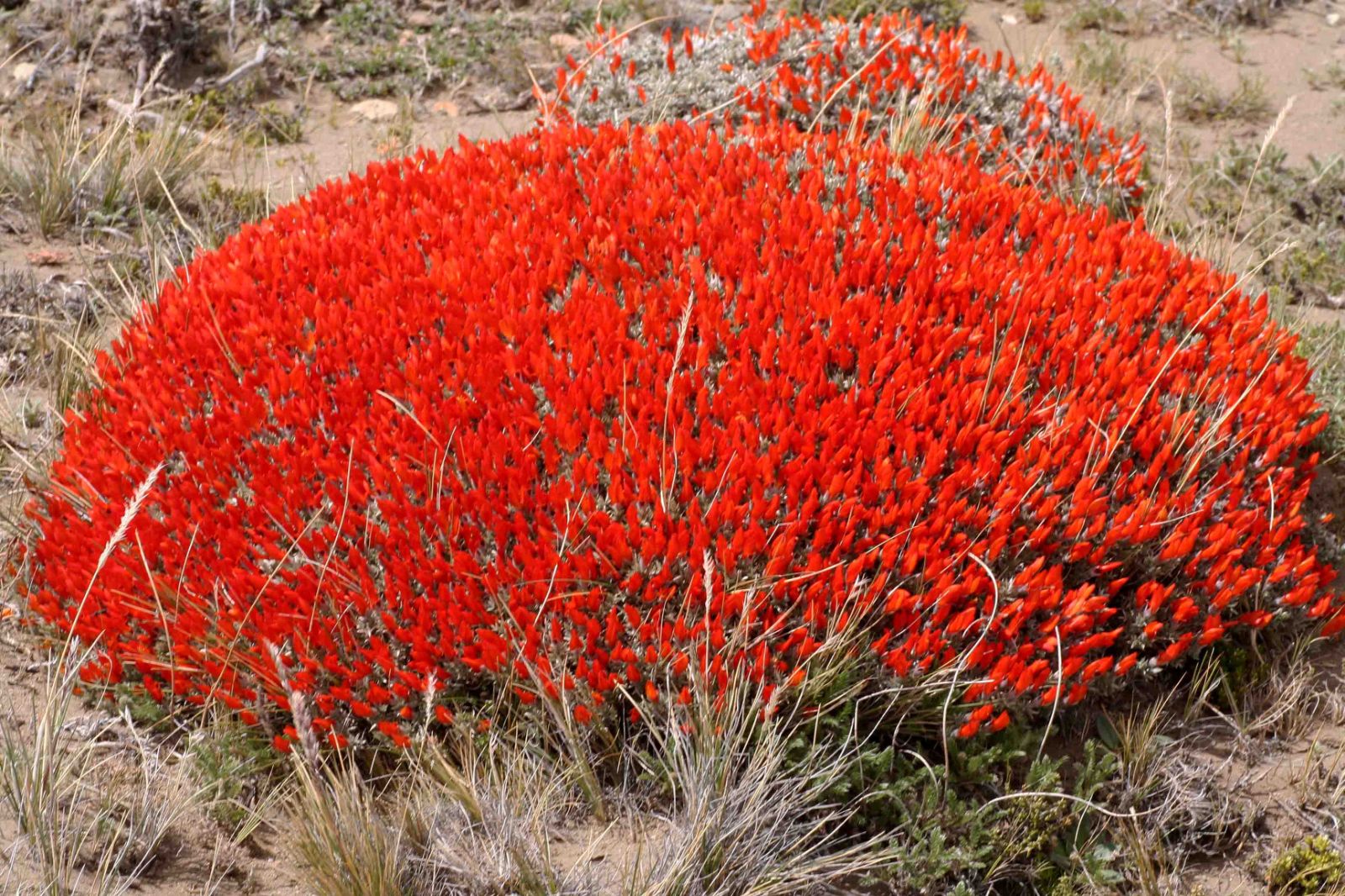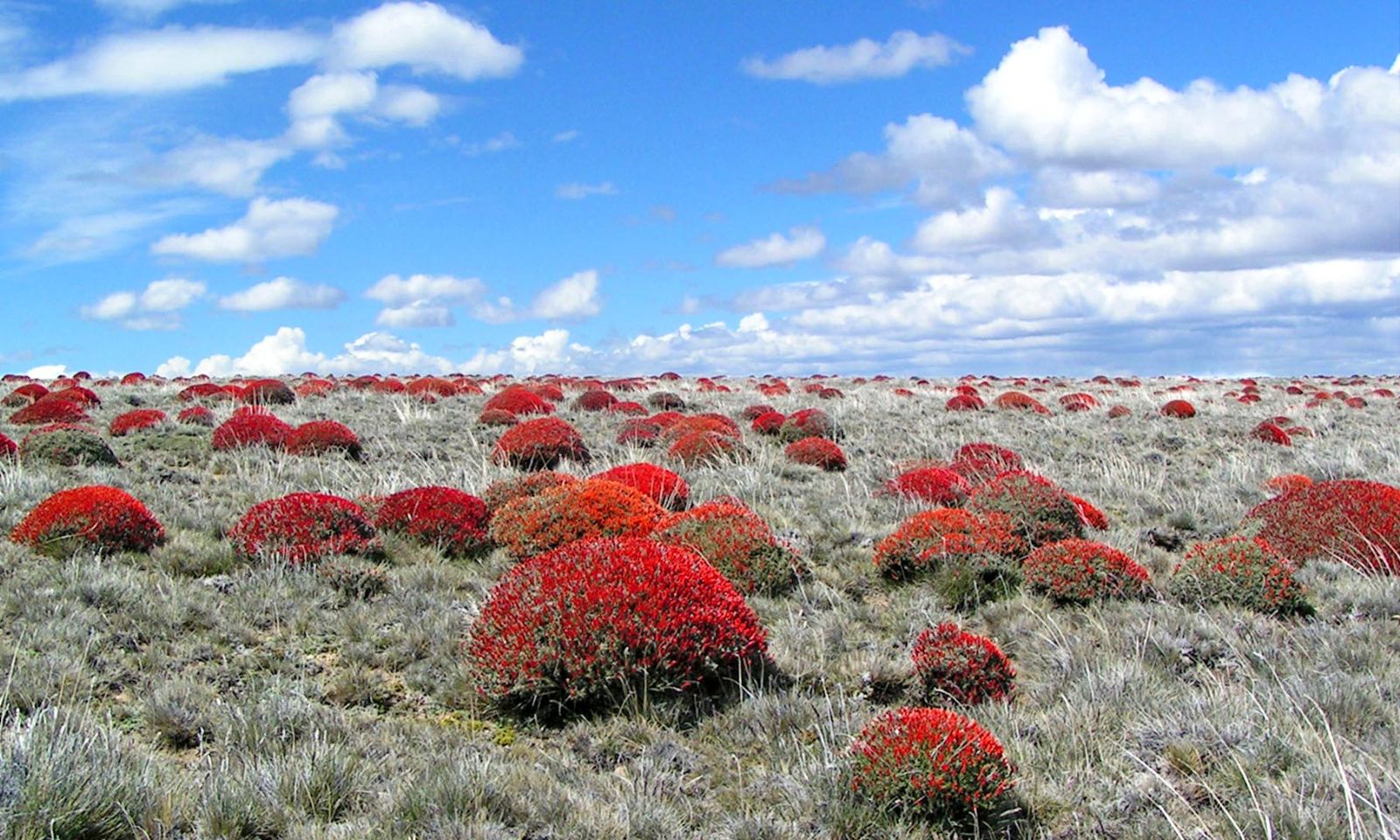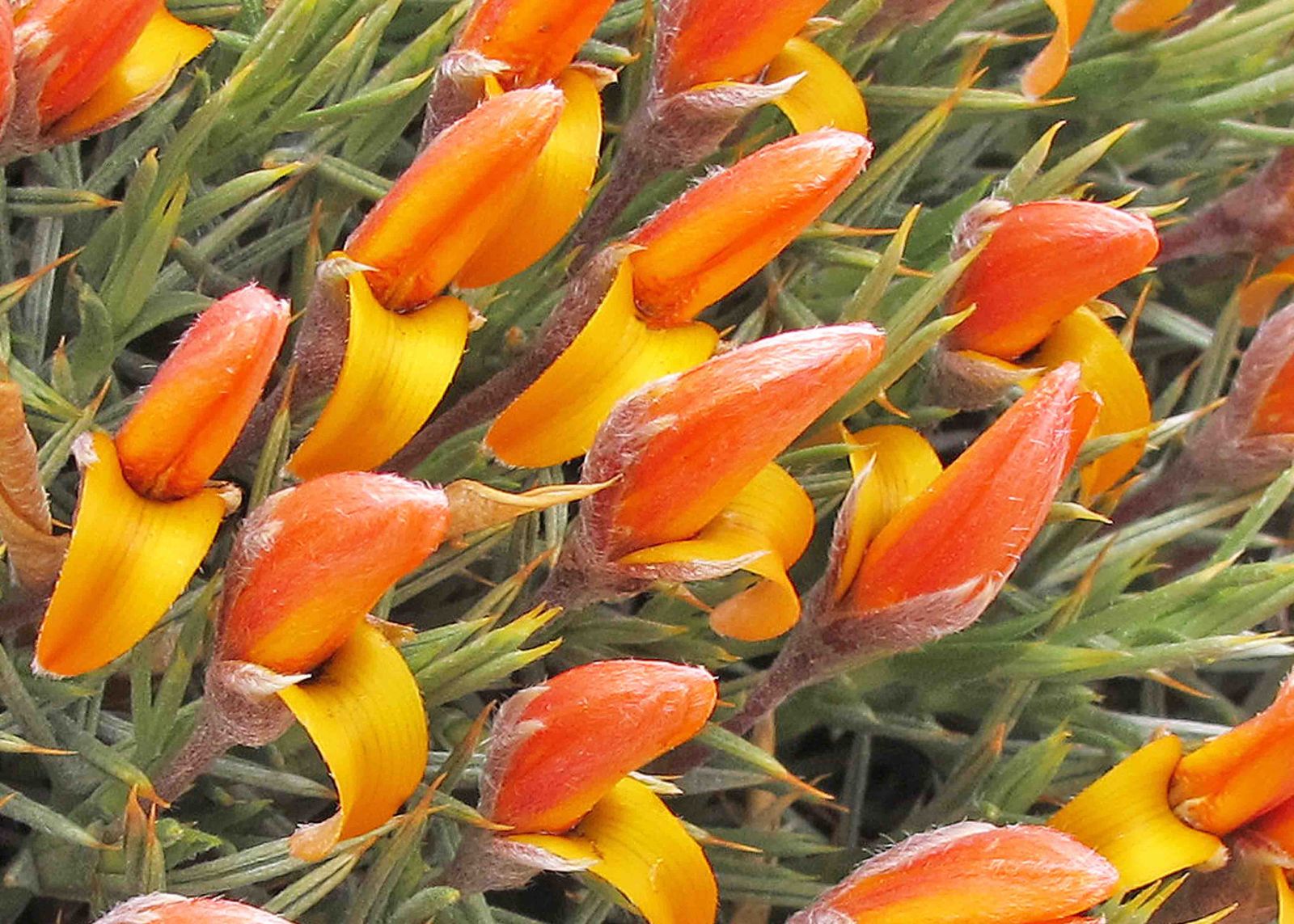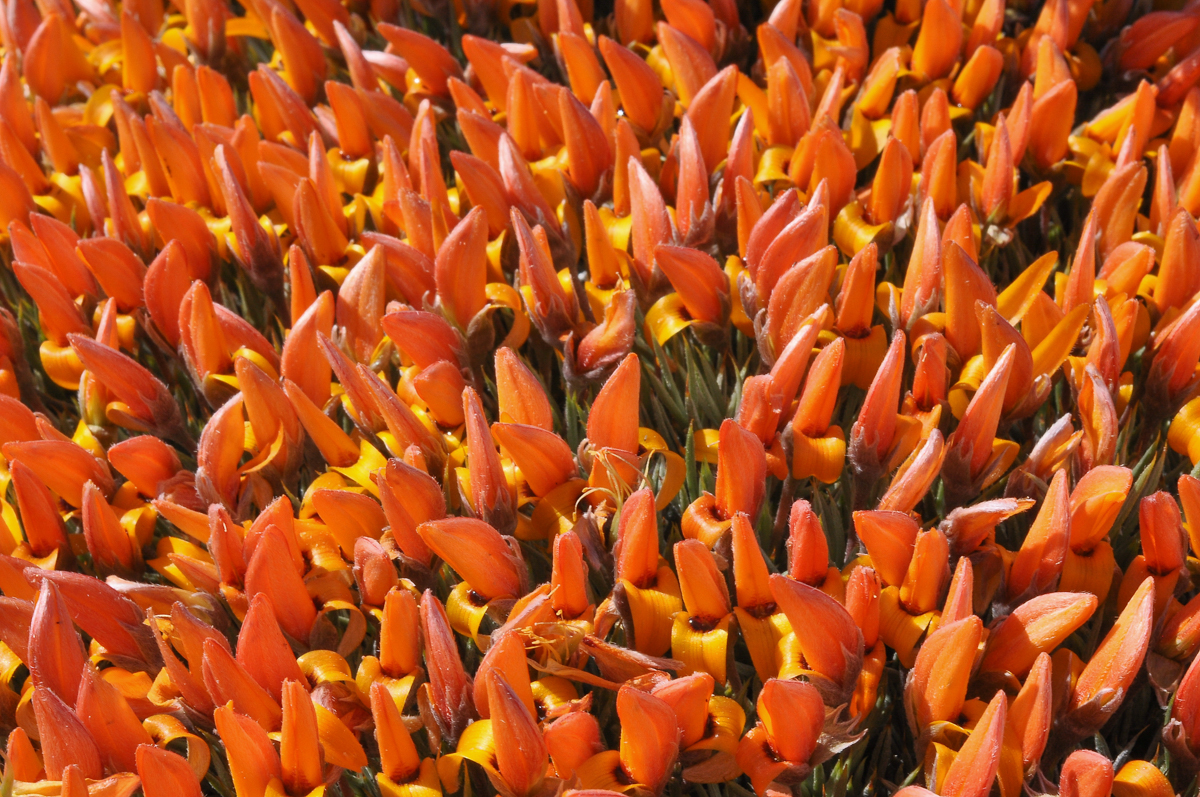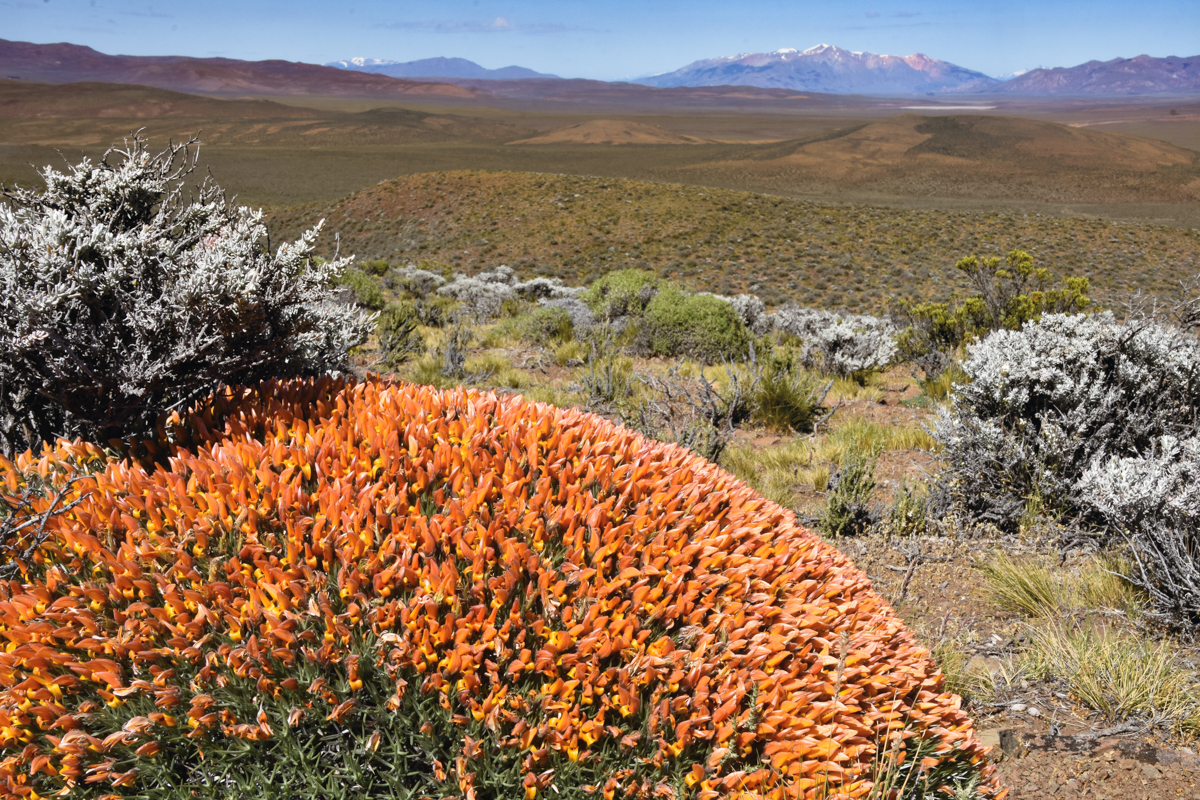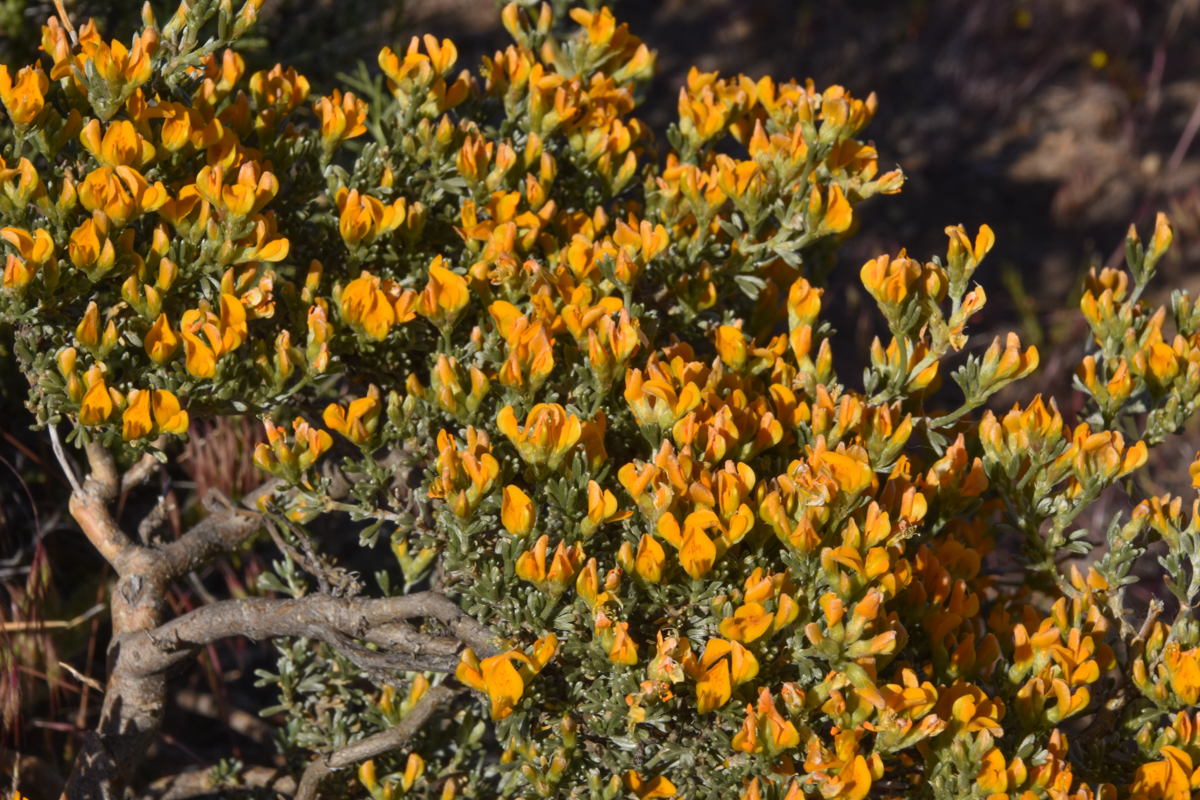Anarthrophyllum
Sponsor
Kindly sponsored by
a member of the International Dendrology Society
Credits
John Grimshaw (2022)
Recommended citation
Grimshaw, J.M. (2022), 'Anarthrophyllum' from the website Trees and Shrubs Online (treesandshrubsonline.
Family
- Fabaceae
15 species of low, hummock-forming densely branched shrubs, usually less than 1 m high, but sometimes considerably wider than tall. Leaves partially modified into sharp spines, subtended by a pair of similar circumcauline stipules, leaflets 1–5, 5–35 mm long, often very narrow. Flowers terminal or lateral on the shoots, solitary or in clusters of 6–8, of typical genistoid shape with a pronounced keel, 1–2 cm in length, yellow, orange or red. Fruit is an explosive legume. (Beckett 1994; Lewis et al. 2005).
Anarthrophyllum is a member of Fabaceae tribe Genisteae – the brooms and allies – from Patagonia and cold, arid parts of the Andes in Chile and Argentina, always growing in low dry shrubland and grassland – effectively windswept cold deserts (Lewis et al. 2005). Its prickly, gorse-like hummocks erupt in spring in dense masses of brightly coloured flowers, which have inspired generations of hopeful cultivators to attempt to grow these plants – with almost no success at all (Bone et al. 2015). We include this brief coverage of the genus here as a tantalising reminder that not every woody plant of apparent garden merit is in cultivation.
The only useful synopsis of the genus for a horticultural audience is provided in the Alpine Garden Society Encylopaedia of Alpines (Beckett 1994, also available online), and readers are referred to it for descriptions. Successful cultivation requires bright light, extremely free-draining growing medium and free-flowing air. Martin Sheader, a very experienced grower of Patagonian alpines and frequent traveller there, has achieved seedlings of A. desideratum 2–3 years old, but growing very lax before dying out (pers. comm. 2022). He also informs us that the legumes and seeds are often heavily infested with weevils, giving a very low percentage of viable seed. A. desideratum has, however, been grown to flowering by a very small number of elite alpine growers, but never survives very long (R. Rolfe pers. comm. 2022).

